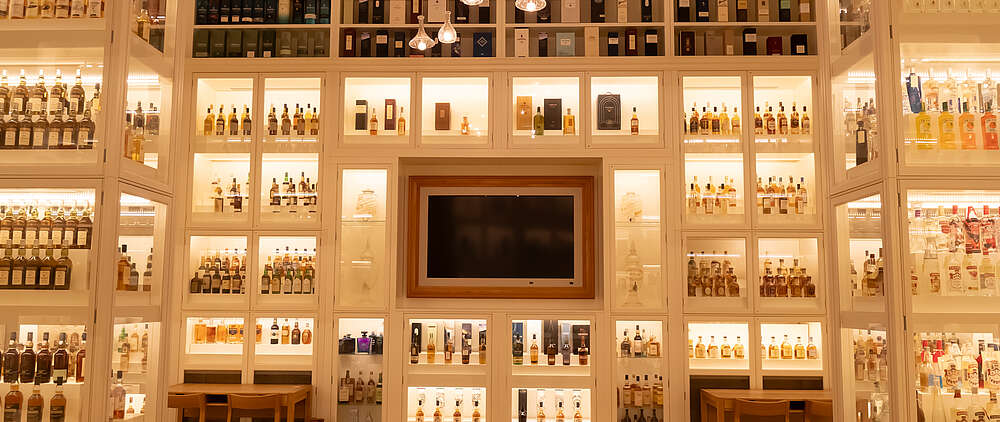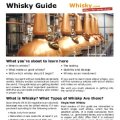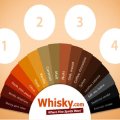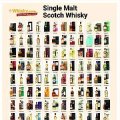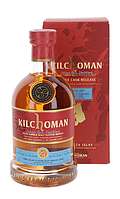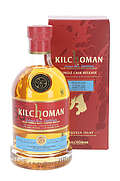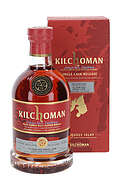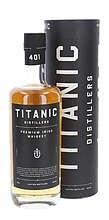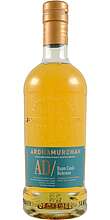Statistical Summary
Table 2. Statistical Summary of the Samples and Participants
| Count | Percent | |
|---|---|---|
| Amount of samples | 1.331 | |
| Amount of chill filtered Samples | 664 | 49,9% |
| Amount of non chill filtered Samples | 667 | 50,1% |
| Participants | 111 | |
| Samples per participant | 48 | |
| CF samples per participant | 24 | |
| NCF samples per participant | 24 | |
| amount of smokers | 15 | 14% |
| participants age < 30 | 25 | 23% |
| age 30 - 39 | 29 | 26% |
| age 40 - 49 | 36 | 32% |
| age 50 - 59 | 17 | 15% |
| age > 60 | 4 | 4% |
| participants experience tasted types of Whisky < 20 | 2 | 2% |
| Types of Whisky tasted 21 - 30 | 14 | 13% |
| Types of Whisky tasted 31 - 50 | 24 | 22% |
| Types of Whisky tasted 51 - 100 | 24 | 22% |
| Types of Whisky tasted 100 < | 46 | 42% |
| Mean | Std dev | |
| Value Overall | 3,2 | 0,8 |
| Value Quality | 3,4 | 0,9 |
| Value Finish | 3,2 | 0,9 |
Legend to Table 2
| CF | Chill filtration |
| NCF | Non chill filtration |
| Mean | Average (Mean value) on a 1 to 5 scale |
| Std dev | Standard deviation |
The upper part of table 2 displays the numbers of samples and participants. Evaluation forms were not returned for all samples, and some samples were accidentally not labelled during bottling and could therefore not be evaluated. The target filling level of the sample bottles was 3.5cl (0.035 litres). Owing to the manual bottling these levels were often surpassed. The theoretical maximum amount was 1,440 sample bottles. The partial overfilling of some samples and the omission of the unlabelled samples led to a reduction of the amount of samples.
With 14% the percentage of smokers was small and is not evaluated as a separate parameter in this study. The samples evaluated by smokers are incorporated regularly in the study.
The age distribution of the participants corresponds roughly to the age profile of the customers of the mail order company The Whisky Store and the age distribution in the forum of The Whisky Store.
The lower part of the table shows the high level of experience of the participants. 85% of the participants have tried more than 30 different Single Malt Whiskies in their life, 64% have even tried more than 50. However, this must not be interpreted as the consumption of complete bottles. Many people in the Whisky scene take part in expert-guided tastings and in privately organised sample exchange platforms, for example on the website www.whisky.de.
The samples were rated on a 1 to 5 scale (see evaluation form in the appendix) by the participants with regard to different criteria such as overall impression (from weak to extreme), quality (from bad to outstanding) or finish (from very short to very long). The scales were regularly used to full capacity by the participants, as is shown by the mean values and the comparably big standard deviations of 0.8 and 0.9 in table 2.
Table 3. Statistical Summary of the Results
| Count | Percent | |
|---|---|---|
| Amount of distilleries guessed | 1.072 | 80,5% |
| Amount of guessed right | 60 | 4,5% |
| Positiv identified chill filltrations | 299 | 45,0% |
| Non positiv identified chill filtrations | 365 | 55,0% |
| Positive identified non chill filtrations | 366 | 54,9% |
| Non positive identified non chill filtrations | 301 | 45,1% |
| Positive identified filtrations | 665 | 50,0% |
| Nob positive identified filtrations | 666 | 50,0% |
| Mean | Std dev | |
| Average quality chill filtration | 3,4 | 0,9 |
| Average quality non chill filtration | 3,4 | 0,9 |
The results shown in table 3 may be surprising to the normal consumer. But whoever has taken part in a blind tasting knows that it is nearly impossible to guess the correct distillery. A total of 1,072 statements as to the distilleries were made (suggestions/guesses). 256 evaluation sheets were returned without any statements regarding the distillery. The rest contained faulty statements. i.e. suggestions about Whiskies not from Scotland. Only 4.5% guessed the correct distillery.
97 different distilleries were among the guesses. The identification rate is very bad but (slightly) above chance hits.
Chill filtration was only identified correctly by 45%. This means that the majority of the participants made wrong assumptions. This is the crucial message of this study. Non chill filtration, on the other hand, was correctly identified in 54.9% of all samples. The aggregate of correctly identified chill filtration/non chill filtration for all samples shows the more or less surprising result that the identification rate is exactly 50.0% - a value that equates mere guessing. Thus chill filtration or non chill filtration are not identifiable by the consumer. 1,331 samples give you a reliable data base.
When the quality assessments by the participants are differentiated between chill filtration and non chill filtration, the same picture emerges. Both filtered and unfiltered Whiskies reach the identical mean value of 3.4 quality points with the identical standard deviation of 0.9.
Table 2 can be summed up as follows: Not only are the participants unable to identify chill filtration by means of taste, but they also do not prefer either type of treatment in terms of quality.


